QED Technologies
Key Technologies Overview
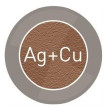
Silver Plated 99.999% Oxygen Free Copper
Speaker cables must exhibit the lowest possible resistance to the flow of electrical current. The larger the cross- sectional area of the conductors the smaller the resistance will be. However the cable must be small enough to be practical for its intended use. Although copper is a very good electrical conductor, silver is even better. By using it in our top of the range cables we can improve conductance without making the cable larger. As the pitch of the sound increases the current flows more and more to the outside of the conductors so we cunningly use silver plated 99.999% oxygen free copper conductors to reduce resistance only where it is needed, thus saving you money.
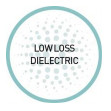
Low Loss Dielectric
Music signals in a loudspeaker cable move back and forth many times every second. The insulating material used to separate the send and return conductors from each other (the dielectric) has to be charged and discharged every time. Not all of the energy stored in the dielectric during each charge cycle is completely returned during each discharge cycle which has a detrimental effect on the fidelity of the sound you hear. That's why at QED we use low loss dielectric materials such as Polyethylene (PE) or Teflon(TM) (PTFE) in preference to cheaper PVC alternatives found in inferior unbranded cables.
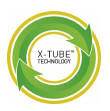
X-Tube Technology
In loudspeaker cables high pitched sounds are forced to travel towards the outside of the conductor and so are able to use less and less of the available cross-sectional area as the pitch increases. This is called the "Skin Effect". It means that for high frequencies the resistance of the cable appears to be much higher than it does for lower pitched sounds. This has a detrimental effect on the fidelity of the sound you hear. QED X-Tube Technology solves this problem by creating a hollow tubular conductor geometry through which each frequency can pass with equal ease when compared to traditional solid or stranded conductors.
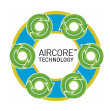
Air Core Technology
In loudspeaker cables electrical current does not flow smoothly because - rather like in a river - small eddy currents are formed. Eddy currents in one conductor can affect the current flowing in an adjacent conductor so that currents flowing in the same direction move away from each other. This "Proximity Effect" increases resistance as frequency increases which has a detrimental effect on the fidelity of the sound you hear. QED Aircore Technology builds on the science of X-Tube Technology and eliminates this problem by using individually insulated twisted strands arranged around a hollow core to solve both the proximity and skin effects.
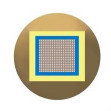
Airloc Technology
If a bare wire termination method is used the exposed copper quickly oxidizes increasing the resistance of the cable, which has a detrimental effect on the fidelity of the sound you hear. Available as an option, QED Airloc plugs eliminate this problem by preventing oxidization and providing a gold plated mating surface which remains low resistance for ever.

